Kids need to know what they are expected to do in the classroom, and they need to know why they are doing it.
When I first began teaching, I didn’t really understand this. I would just do stuff with my kids, and not really talk to them about it beforehand. And I didn’t always explain why something was important.
However, I figured out pretty fast that I needed to make a change. 🙂
Now I understand that when my kids know beforehand what they’re going to be doing and why it’s important, their behavior improves, and they’re more successful with the learning task.
Think about it this way: Imagine that your principal randomly announces a meeting. On Friday afternoon. Before a holiday break. You just want to go home, right?!
And even worse, your principal doesn’t tell you what the meeting is about. The focus isn’t even clear after the meeting starts. And when the meeting ends, you aren’t sure why it was necessary.
That would be frustrating, right? Well, that’s what can happen when we don’t tell our students what learning activities we have planned for them and why those learning activities are important.
In this post, I’ll share some simple strategies for communicating the “what” and “why” of our instructional activities on a daily basis. Since I’m a literacy specialist, I’ll refer mainly to literacy instruction. But you can apply these ideas to any subject area!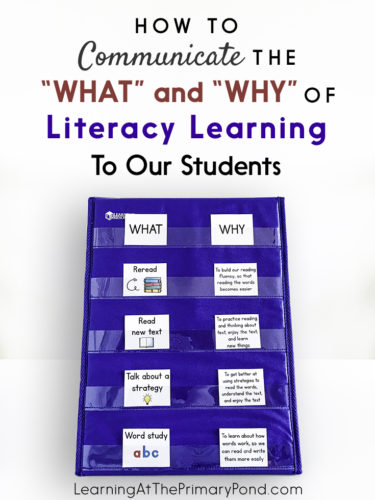
Disclaimer: This post contains Amazon affiliate links.
Strategy One: Conduct a Morning Meeting
I read The Morning Meeting Book (Kriete and Davis) about 7 or 8 years ago.
While I don’t remember a ton about the book, I do remember that it was instrumental in making morning meeting a daily part of our classroom routine.
Morning meeting can include a variety of things. For me, it includes:
- Good morning song and greeting classmates
- Morning message
- Stretching
- A discussion of the day’s schedule and any special events
Morning meeting is fabulous for a variety of reasons. But back to the main topic of this post: morning meeting is great for letting kids know what will be happening during the school day. I like to post the day’s schedule somewhere in the classroom, and we briefly discuss plans during our morning meeting.
During morning meeting, I don’t go too far in depth about why we will be doing certain activities—it’s more about establishing the what at this point.
Strategy Two: Post Schedules, Goals, and Visuals
Morning meeting is just the tip of the iceberg—I still need to consistently communicate the what and why to students as we move through different instructional activities in our day.
Before we start an activity, I try to preface it by saying something like, “Now we are going to do some partner reading. Since you’ll be rereading books you already know, this activity will help build your reading fluency.” (Assuming that the kids are already quite familiar with the concept of fluency.)
If it’s an activity that we’ve been doing for a while, I try to ask students to explain what our goal is and why we are doing a particular activity (without my help).
Notice that I said “try.” Even though I’ve been doing this for a while, it’s a constant challenge to make time for it—and actually remember to do it! It’s SO easy to get swept up in a hectic day and forget to communicate these concepts to students.
So if you struggle with this, I’m right there with you. But it definitely does get easier once you’re in a routine.
And speaking of routines, here are some ways to help yourself and your students consistently return to the what and why throughout your day:
#1: Post the standard(s) you’re working on. Many of us are required to do this by our schools, or for our evaluations. Just posting the standards themselves isn’t all that useful to students. So I like to put them in kid-friendly “I Can” terms, and I like to use these posters because they have a visual representation of each standard:
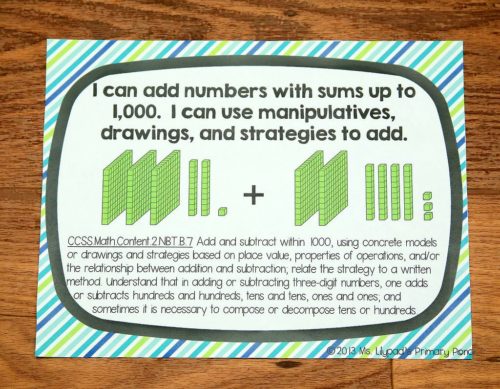
We also have to remember to discuss the standard(s) with students as we address them throughout the day.
Example: “Today we are working on ______. This will help us _______. Let’s read the ‘I can’ statement together to remind us of our goal: _______.”
Having the standards posted in this way can remind us to discuss them and can give our students a visual reminder of what they are working on!
To see the posters I use for this purpose, click HERE (I have them for K-3).
#2: Provide more specific visuals tied to specific instructional activities. Sometimes standards can feel too general. We may be working on one particular part of a standard, or a skill that will allow students to eventually achieve the standard. So I like to provide even more specific visuals.
This is an example of a visual I use during guided reading or small group instruction. I can put this right on the table and visually reinforce what we’re working on. It helps the kids remember to use the strategy as they read too! And the nice thing about this particular stand is that it has multiple sleeves. I can load it up with different strategy visuals and just flip, flip, flip as the day progresses!
The visuals can be found in my guided reading packs, HERE (they are also in my reading workshop toolkits) and the stand-up chart can be found HERE.
I think using these types of tools is even more important for students who struggle academically or with behavior. Here’s a photo of what I’ve started to do recently with students in intervention:
You can get an editable file to create your own cards like this by clicking HERE. (You will need to make a COPY of the file so that you can edit it. You can also download it as a PowerPoint template. And the font I used is KG Primary Penmanship, which you can get HERE – it’s free for personal use.)
#3: Have a student helper remind you to use the resources suggested above. Honestly, I am quite forgetful. So I set myself up for success by “outsourcing” as many things as I can to my students! You can even create a job in your classroom for this. The “Goal Master” can remind you to discuss learning goals every time you change activities.
Strategy Three: Make Time for Reflection
In addition to discussing the what and why before you start an instructional activity, it’s important to briefly revisit these concepts at the end of each activity.
I am SO guilty of just rushing on to the next thing. But it’s powerful for students when we:
- Remind them of our goal (or have them restate it in their own words from memory)
- Ask them to evaluate whether or not we achieved it
The evaluation part can be done as a class, or it can be done on an individual basis. Students can show a thumbs up or thumbs to the side. They can do a simple exit slip by writing down a number on a scale of 1-3. Or they can write a sentence to evaluate themselves.
Like I said, this is another constant challenge for me. But think about it this way—what if we never reflected on our own teaching? Holy cow—our instruction would never get much better! So for our students to improve, it’s quite helpful if we make time for their self-reflection too.
Next Steps
What do you do to communicate the “what” and “why” of your instruction to students? Do you have any tips to share? Add your thoughts in the comments—I’d love to hear from you! 🙂




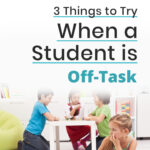
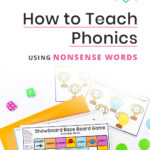


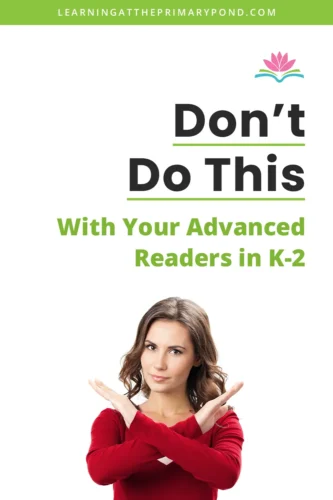
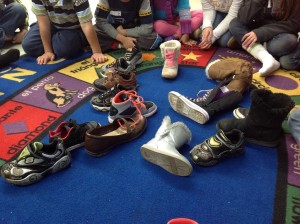






Do you have the common core standards for 4th? I love that you provide an accurate visual w/ your definition.
Hi Rebecca! I just have them through 3rd grade – so sorry!
Alison
Thank you….. I hope this helps me to teach our son how to write a lot better